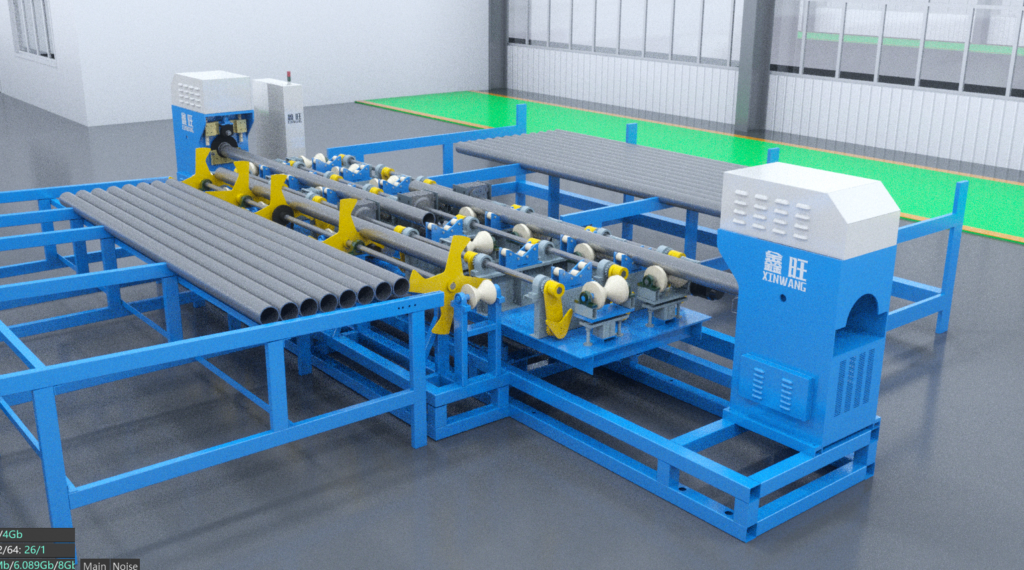Pipe prefabrication is the process of constructing a piping system off-site, rather than on-site. It involves the manufacturing and assembly of various piping components in a controlled environment, before they are transported and installed at the construction site. This approach allows for faster, more efficient, and cost-effective construction, as well as higher quality control. In this article, we will explore pipe prefabrication in detail, discussing its benefits, applications, and best practices.
Pipe prefabrication involves the assembly of piping systems off-site, where individual components such as pipes, valves, and fittings are fabricated and assembled into larger modules or spools, which are then transported to the construction site for installation. This process enables fast-track project delivery, minimizes site disruptions, and reduces safety risks associated with on-site construction.

Pipe prefabrication offers numerous benefits, including:
In a controlled factory environment, it is easier to ensure that each component is manufactured according to the required standards, which minimizes the risk of defects, errors, or inconsistencies. This results in higher quality, more reliable piping systems.
Prefabrication eliminates the need for on-site cutting, fitting, and welding, which can be time-consuming and expensive. By manufacturing the components in a controlled environment, fabrication time can be reduced, and the overall construction schedule can be accelerated, saving time and money.
Prefabrication eliminates many of the risks associated with on-site construction, such as falls, electrocution, and other hazards. Workers can assemble the components in a safer environment and then transport them to the construction site for installation.
Pipe prefabrication offers greater flexibility in terms of customization and scalability. Manufacturers can produce customized components to meet specific project requirements, and modular spools can be assembled in different sizes and configurations to suit various site conditions.
Pipe prefabrication is used in various applications, including:
Pipe prefabrication is commonly used in building services, such as HVAC systems, plumbing, and fire protection. Prefabricated piping components can be quickly installed, minimizing disruption to building occupants.
Pipe prefabrication is also widely used in industrial processes, such as chemical processing, power generation, and water treatment. Prefabricated piping systems can be designed and manufactured to meet specific performance requirements and environmental conditions.
Prefabricated piping systems are also used in infrastructure projects, such as bridges, tunnels, and roads. These projects often require customized piping systems that can be quickly installed to minimize traffic disruptions.
To ensure the successful implementation of pipe prefabrication, it is essential to follow best practices, including:
Early collaboration and planning are critical to the success of pipe prefabrication projects. All stakeholders, including designers, fabricators, and installers, should work together to identify project requirements, design constraints, and fabrication specifications.
Standardization and quality control are essential to ensure consistent and reliable performance of prefabricated piping systems. Manufacturers should adhere to industry standards and use quality control measures to ensure that each component meets the required specifications.
Proper handling and storage are critical to prevent damage to prefabricated piping components during transportation and installation. Components should be carefully packaged, labeled, and protected from moisture, dust, and other contaminants.
Efficient installation and integration are key to maximizing the benefits of pipe prefabrication.Installers should be properly trained and equipped to quickly and safely install prefabricated piping systems, and designers should ensure that the systems are properly integrated with other building systems.
Regular maintenance and inspection are essential to ensure the long-term performance and reliability of prefabricated piping systems. Manufacturers should provide maintenance guidelines, and owners should implement a regular inspection and maintenance program to detect and address any issues early.
Pipe prefabrication can be used for various types of piping systems, including HVAC, plumbing, fire protection, industrial process piping, and infrastructure piping.
The main benefits of pipe prefabrication include improved quality control, time and cost savings, increased safety, and greater flexibility in customization and scalability.
Pipe prefabrication is suitable for many types of construction projects, but it may not be the best option for small or simple projects where on-site construction is faster and more cost-effective.
Manufacturers should adhere to industry standards and use quality control measures to ensure that each component meets the required specifications. Regular maintenance and inspection are also essential to ensure long-term performance.
Yes, prefabricated piping systems can be customized to meet specific project requirements, including size, configuration, and performance specifications.
Pipe prefabrication offers numerous benefits over traditional on-site construction methods, including improved quality control, time and cost savings, increased safety, and greater flexibility in customization and scalability. To ensure the successful implementation of pipe prefabrication, it is important to follow best practices, such as early collaboration and planning, standardization and quality control, proper handling and storage, efficient installation and integration, and regular maintenance and inspection. By adopting these best practices, construction professionals can take advantage of the many benefits of pipe prefabrication and deliver better-quality projects in less time and at a lower cost.
Copyright © JIANGYIN XINWANG MACHINERY CO., LTD All Rights Reserved